-
 Bitcoin
Bitcoin $117900
0.31% -
 Ethereum
Ethereum $3766
0.28% -
 XRP
XRP $3.176
-0.31% -
 Tether USDt
Tether USDt $1.000
0.00% -
 BNB
BNB $795.6
1.51% -
 Solana
Solana $186.8
-1.09% -
 USDC
USDC $0.9999
-0.01% -
 Dogecoin
Dogecoin $0.2353
-1.33% -
 TRON
TRON $0.3226
1.49% -
 Cardano
Cardano $0.8172
-1.08% -
 Sui
Sui $4.178
3.06% -
 Hyperliquid
Hyperliquid $43.05
-3.39% -
 Stellar
Stellar $0.4367
-0.57% -
 Chainlink
Chainlink $18.62
1.47% -
 Hedera
Hedera $0.2828
6.63% -
 Bitcoin Cash
Bitcoin Cash $584.7
5.65% -
 Avalanche
Avalanche $24.81
2.53% -
 Litecoin
Litecoin $112.8
-0.88% -
 UNUS SED LEO
UNUS SED LEO $8.975
-0.08% -
 Shiba Inu
Shiba Inu $0.00001395
-1.07% -
 Toncoin
Toncoin $3.285
-1.05% -
 Ethena USDe
Ethena USDe $1.001
0.01% -
 Polkadot
Polkadot $4.123
0.76% -
 Uniswap
Uniswap $10.49
-0.18% -
 Monero
Monero $326.5
0.14% -
 Dai
Dai $0.9999
-0.02% -
 Bitget Token
Bitget Token $4.576
0.34% -
 Pepe
Pepe $0.00001247
-1.55% -
 Cronos
Cronos $0.1400
3.77% -
 Aave
Aave $295.1
-0.73%
How to predict the continuity of the band market through the area of the MACD column?
The MACD column area helps predict band market continuity in crypto trading by analyzing momentum strength and stability over time.
Jun 09, 2025 at 09:07 am
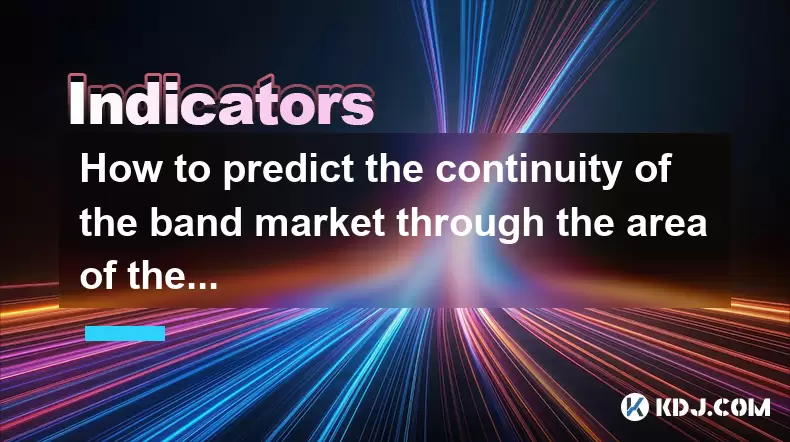
The Moving Average Convergence Divergence (MACD) indicator is a powerful tool used by traders to gauge the momentum of a cryptocurrency's price movement. One specific aspect of the MACD that traders often focus on is the area of the MACD column, which can provide insights into the potential continuity of a band market. This article will explore how to predict the continuity of a band market through the area of the MACD column, providing a detailed analysis and practical guidance for cryptocurrency traders.
Understanding the MACD Indicator
The MACD indicator is composed of two lines: the MACD line and the signal line. The MACD line is calculated by subtracting the 26-period Exponential Moving Average (EMA) from the 12-period EMA. The signal line is a 9-period EMA of the MACD line. Additionally, the MACD histogram, or column, represents the difference between the MACD line and the signal line.
The MACD histogram is particularly useful for identifying changes in momentum. When the MACD histogram is above the zero line, it indicates bullish momentum, while below the zero line suggests bearish momentum. The area of the MACD column, which is the cumulative sum of the histogram values over a period, can provide deeper insights into the strength and sustainability of these trends.
Identifying a Band Market
A band market, also known as a range-bound market, is characterized by price movements that oscillate between a defined upper and lower band. In such markets, prices tend to trade within a specific range without establishing a clear trend. Identifying a band market involves recognizing these upper and lower boundaries and observing price behavior within these limits.
To identify a band market, traders can use various technical analysis tools, including trend lines, support and resistance levels, and indicators like Bollinger Bands. Once a band market is identified, the next step is to use the MACD column area to predict its continuity.
Analyzing the MACD Column Area
The area of the MACD column can be calculated by summing the values of the MACD histogram over a specific period. This area can provide valuable information about the momentum within a band market. A larger area suggests stronger momentum, while a smaller area indicates weaker momentum.
To analyze the MACD column area, follow these steps:
- Choose a suitable time frame: Depending on your trading strategy, select a time frame that aligns with your trading goals. Common time frames include daily, hourly, or 15-minute charts.
- Calculate the MACD column area: Sum the values of the MACD histogram over the chosen time frame. This can be done manually or using trading software that supports custom indicators.
- Compare the area to previous periods: Evaluate the current MACD column area against historical data to determine if the momentum is increasing or decreasing.
Predicting Band Market Continuity
To predict the continuity of a band market using the MACD column area, traders should focus on the following aspects:
- Consistency of the MACD column area: If the MACD column area remains relatively stable over multiple periods within the band, it suggests that the band market is likely to continue. A consistent area indicates that the momentum within the band is balanced and sustainable.
- Changes in the MACD column area: A sudden increase or decrease in the MACD column area can signal a potential breakout from the band. An increasing area may indicate building momentum towards the upper band, while a decreasing area may suggest weakening momentum towards the lower band.
- Divergence between price and MACD column area: If the price continues to oscillate within the band but the MACD column area shows a divergence (e.g., price remains stable but the MACD column area decreases), it could indicate that the band market is losing strength and may soon break out.
Practical Example: Analyzing a Cryptocurrency Chart
Let's consider a practical example using a cryptocurrency chart to illustrate how to predict the continuity of a band market through the MACD column area.
- Identify the band market: On a daily chart of Bitcoin, you notice that the price has been oscillating between $25,000 and $30,000 for the past two months. You draw horizontal lines at these levels to mark the upper and lower bands.
- Calculate the MACD column area: Over the past 30 days, you sum the values of the MACD histogram. The total area is 150.
- Analyze the consistency: You compare this area to the previous 30-day period, where the area was 145. The slight increase suggests that the momentum within the band is relatively stable.
- Monitor for changes: Over the next week, you continue to calculate the MACD column area. If the area remains around 150, it supports the prediction that the band market will continue. However, if the area suddenly drops to 100, it could indicate weakening momentum and a potential breakout to the downside.
Integrating Other Technical Indicators
While the MACD column area is a valuable tool, integrating other technical indicators can enhance your analysis and improve the accuracy of your predictions. Combining the MACD column area with indicators like the Relative Strength Index (RSI) and Bollinger Bands can provide a more comprehensive view of the market.
- RSI: The RSI can help identify overbought or oversold conditions within the band. If the RSI remains within a neutral range (typically between 30 and 70) while the MACD column area is stable, it supports the prediction of a continuing band market.
- Bollinger Bands: Bollinger Bands can help confirm the boundaries of the band market. If the price consistently touches the upper and lower Bollinger Bands without breaking out, and the MACD column area remains stable, it reinforces the likelihood of the band market's continuity.
Frequently Asked Questions
Q: Can the MACD column area be used to predict the direction of a breakout in a band market?
A: While the MACD column area can indicate the strength of momentum within a band market, it is not primarily used to predict the direction of a breakout. A sudden increase in the MACD column area may suggest a potential breakout, but other indicators like trend lines and support/resistance levels are more suitable for predicting the direction.
Q: How often should I recalculate the MACD column area to predict band market continuity?
A: The frequency of recalculating the MACD column area depends on your trading time frame. For daily traders, recalculating the area daily or weekly can provide timely insights. For longer-term traders, monthly recalculations might be sufficient.
Q: Are there any specific cryptocurrency pairs where the MACD column area is more effective in predicting band market continuity?
A: The effectiveness of the MACD column area in predicting band market continuity is not limited to specific cryptocurrency pairs. However, pairs with higher liquidity and trading volume, such as BTC/USD or ETH/USD, tend to provide more reliable signals due to their established market behavior.
Q: Can the MACD column area be used in conjunction with fundamental analysis to predict band market continuity?
A: While the MACD column area is a technical indicator, it can be used alongside fundamental analysis to enhance your predictions. Fundamental factors like news events or regulatory changes can influence the momentum within a band market, and combining these insights with the MACD column area can provide a more holistic view of potential market movements.
Disclaimer:info@kdj.com
The information provided is not trading advice. kdj.com does not assume any responsibility for any investments made based on the information provided in this article. Cryptocurrencies are highly volatile and it is highly recommended that you invest with caution after thorough research!
If you believe that the content used on this website infringes your copyright, please contact us immediately (info@kdj.com) and we will delete it promptly.
- Cryptos to Watch in 2025: Punisher Coin, Chainlink, and the Altcoin Arena
- 2025-07-27 18:30:13
- Bitcoin, Altcoins, Rebound: Navigating the Crypto Comeback Trail
- 2025-07-27 18:30:13
- Ethereum, Bitcoin, and Altcoins: A Shift in Crypto Tides?
- 2025-07-27 19:10:13
- Windtree Therapeutics' Bold BNB Strategy: A $520 Million Crypto Play
- 2025-07-27 19:10:13
- Solana, Staking, and Unilabs: What's the Buzz in the Crypto Space?
- 2025-07-27 16:50:13
- VeChain, HBAR, Remittix: Navigating the Crypto Landscape in 2025
- 2025-07-27 17:10:12
Related knowledge
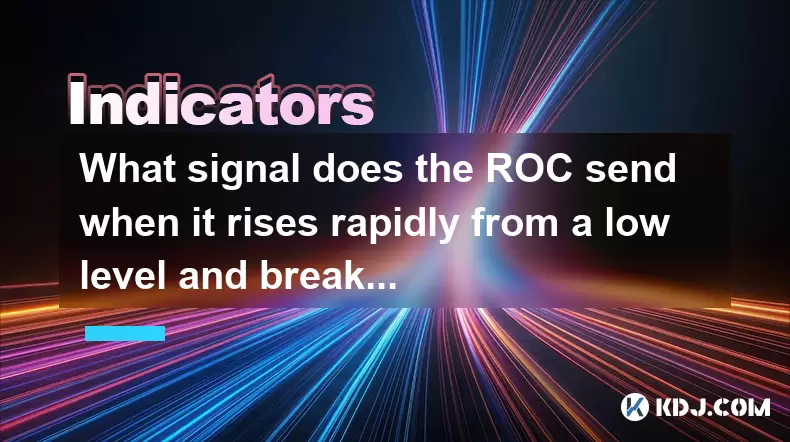
What signal does the ROC send when it rises rapidly from a low level and breaks through the zero axis?
Jul 27,2025 at 10:15am
Understanding the Rate of Change (ROC) IndicatorThe Rate of Change (ROC) is a momentum-based oscillator used in technical analysis to measure the perc...
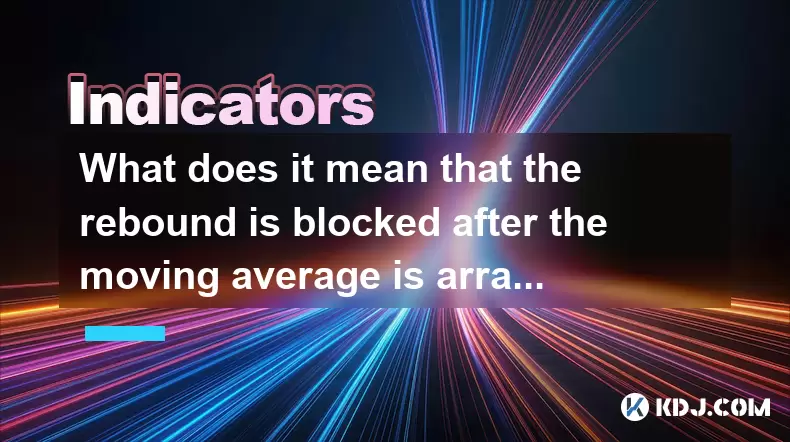
What does it mean that the rebound is blocked after the moving average is arranged in a short position for the first time?
Jul 26,2025 at 10:51am
Understanding the Short-Term Moving Average ConfigurationWhen traders refer to a 'short position arrangement' in moving averages, they are describing ...
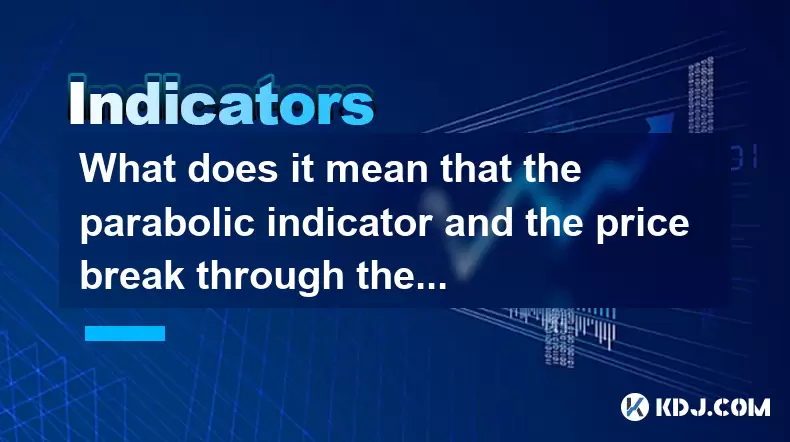
What does it mean that the parabolic indicator and the price break through the previous high at the same time?
Jul 26,2025 at 07:22pm
Understanding the Parabolic Indicator (SAR)The Parabolic SAR (Stop and Reverse) is a technical analysis tool developed by J. Welles Wilder to identify...
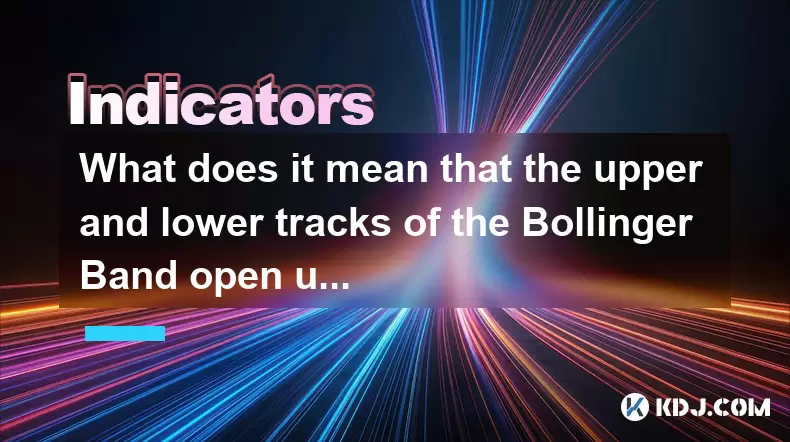
What does it mean that the upper and lower tracks of the Bollinger Band open upward at the same time?
Jul 27,2025 at 02:49pm
Understanding the Bollinger Band StructureThe Bollinger Band is a widely used technical analysis tool developed by John Bollinger. It consists of thre...
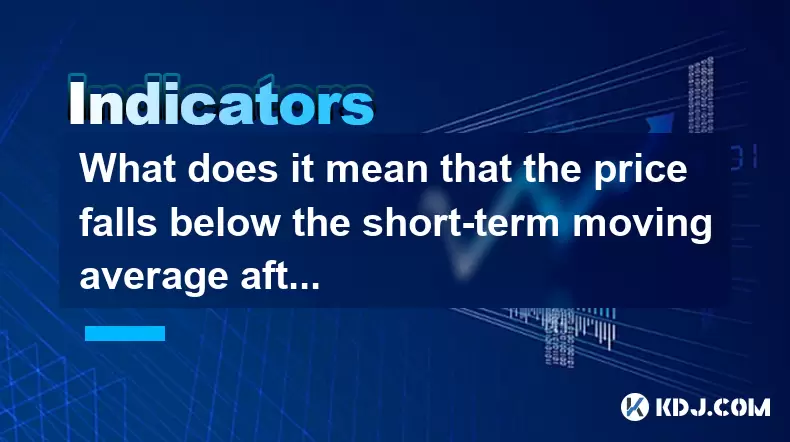
What does it mean that the price falls below the short-term moving average after the RSI top divergence?
Jul 26,2025 at 11:01pm
Understanding RSI Top Divergence in Cryptocurrency TradingThe Relative Strength Index (RSI) is a momentum oscillator widely used in cryptocurrency tra...
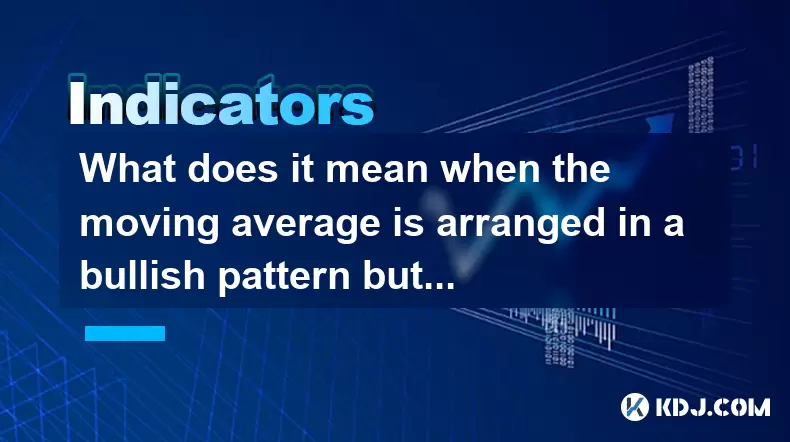
What does it mean when the moving average is arranged in a bullish pattern but the MACD bar is shortened?
Jul 27,2025 at 06:07am
Understanding the Bullish Moving Average PatternWhen traders observe a bullish moving average pattern, they typically refer to a configuration where s...

What signal does the ROC send when it rises rapidly from a low level and breaks through the zero axis?
Jul 27,2025 at 10:15am
Understanding the Rate of Change (ROC) IndicatorThe Rate of Change (ROC) is a momentum-based oscillator used in technical analysis to measure the perc...

What does it mean that the rebound is blocked after the moving average is arranged in a short position for the first time?
Jul 26,2025 at 10:51am
Understanding the Short-Term Moving Average ConfigurationWhen traders refer to a 'short position arrangement' in moving averages, they are describing ...

What does it mean that the parabolic indicator and the price break through the previous high at the same time?
Jul 26,2025 at 07:22pm
Understanding the Parabolic Indicator (SAR)The Parabolic SAR (Stop and Reverse) is a technical analysis tool developed by J. Welles Wilder to identify...

What does it mean that the upper and lower tracks of the Bollinger Band open upward at the same time?
Jul 27,2025 at 02:49pm
Understanding the Bollinger Band StructureThe Bollinger Band is a widely used technical analysis tool developed by John Bollinger. It consists of thre...

What does it mean that the price falls below the short-term moving average after the RSI top divergence?
Jul 26,2025 at 11:01pm
Understanding RSI Top Divergence in Cryptocurrency TradingThe Relative Strength Index (RSI) is a momentum oscillator widely used in cryptocurrency tra...

What does it mean when the moving average is arranged in a bullish pattern but the MACD bar is shortened?
Jul 27,2025 at 06:07am
Understanding the Bullish Moving Average PatternWhen traders observe a bullish moving average pattern, they typically refer to a configuration where s...
See all articles

























































































